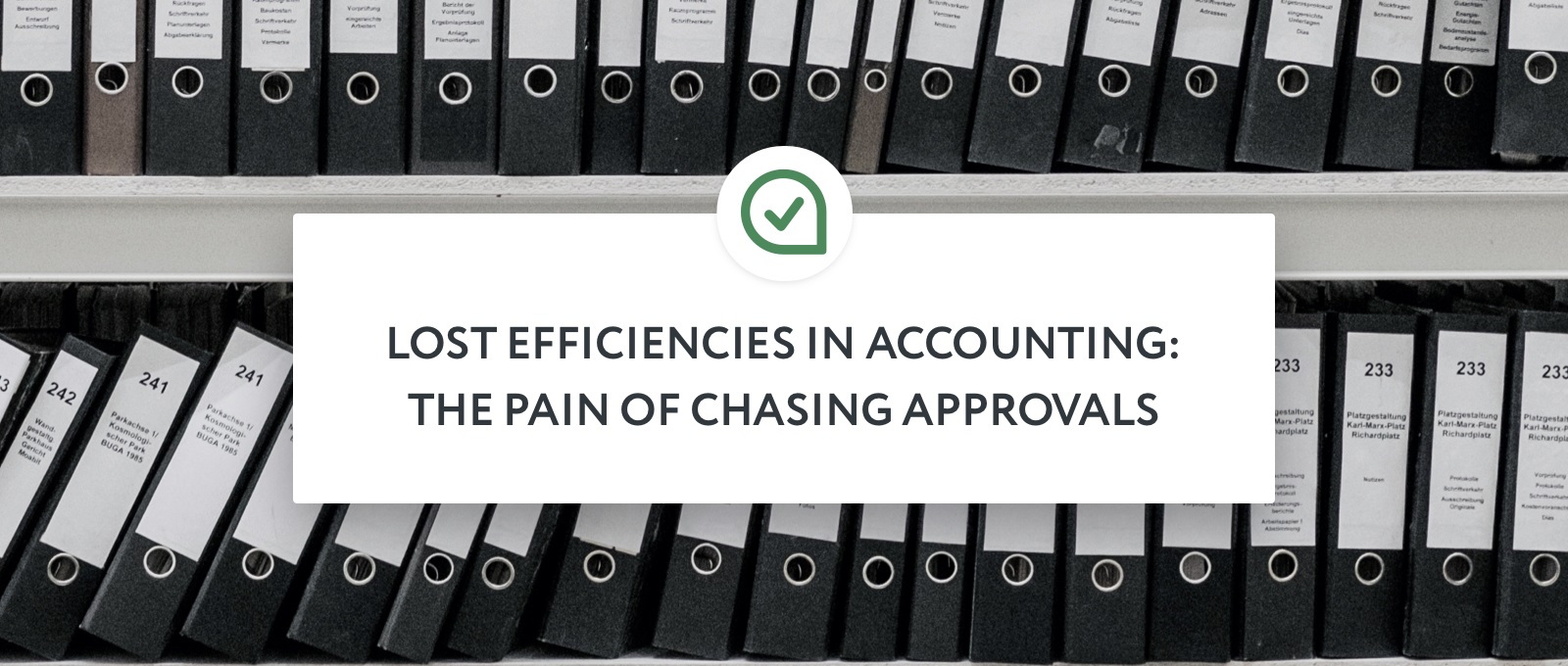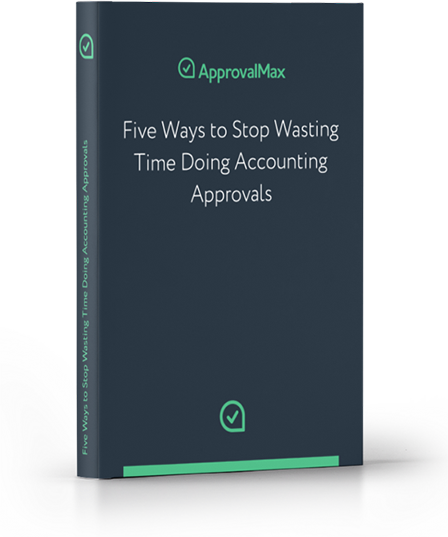Lost Efficiencies in Accounting: The Pain of Chasing Approvals

Accountants are the unsung heroes of the business world, responsible for a wide range of important activities far beyond preparing the P&L.
These include: ensuring the legal compliance of business transactions; maintenance of financial records and controls; recommendations for policies and procedures; and responsibility for internal audits, among others.
In short, the accounting department is the financial backbone of a business.
And it goes without saying that their day-to-day is hugely reliant upon accurate and up-to-date financial data. If that data is even slightly incorrect, it can throw the whole operation out of whack.
That’s why implementing a financial approval process is a vitally important – yet often overlooked – business action. A clear and considered approval workflow ensures correct decisions are taken by individuals with an appropriate level of authorisation.
However, this remains one of the core threats to efficiency in the modern workplace. All too often, approvals are sought and received using paper and email, resulting in bloated inboxes, unwieldy email chains, and misplaced documents. For someone with such a range of responsibilities, managing an inefficient approval workflow is a step too far for the intrepid accountant.
In this blog post, we examine the three biggest challenges to accounting efficiency as a result of poorly conceived – or non-existent – approval workflows, before discussing the solution: cloud technology.
3 Major Challenges to Accounting Efficiency
Adopting a paper and email-based financial approval workflow will result in three challenging scenarios, forcing the accountant to spend precious time on activities far beyond their core responsibility and skill set.
In fact, inefficient processes and duplicated efforts are the most common cause of wasted work hours.
And as a result of these challenges – outlined below – the department’s level of efficiency can become seriously compromised.
Challenge One: Workflow Setup & Management
First, in orchestrating the approval workflow, the accountant is tasked with gathering all approval-related information, and creating and administering email chains and documentation for each approval thread.
This becomes significantly more difficult in larger organisations, as the accountant needs to determine which individuals need to be looped in on the approval process at any given time.
And perhaps the most baffling aspect of this scenario is that the same activities need to be performed over and over again; the same emails need to be sent with every new financial document that requires approval. Work is duplicated, while tracking approvals in an increasingly bloated email inbox becomes even more challenging.
Challenge Two: Chasing Approvers
Second, the accountant faces more wasted time chasing and pushing individuals for a timely approval decision. And this can require the creation and maintenance of a complicated schedule of email notifications, tracking availability and approval status.
This represents a great deal of work in pursuit of a simple YES or NO. And things can get a great deal messier in cases where geographically distributed organisations are working within different time zones.
In short, the accountant can chalk up hours calling and emailing a particular business approver – who is undoubtedly busy themselves with their own responsibilities – to ask that they check their emails and make a decision.
Challenge Three: Reports & Audits
Finally, in preparing management and audit reports, the accountant must filter through multiple email chains in order to piece together the approval decision history, and identify the required data. And in cases of multiple financial transactions, there can be a myriad of emails and email chains related to their authorisation.
This throws up two distinct problems:
- When it comes to preparing a management report, presenting data on approval statuses can be tricky. Things get worse when such reports need to be created and shared repeatedly, meaning the accountant needs to make the same deep dive into their inbox time and again.
- And when preparing for an audit, it’s business critical that the necessary data can be accessed and provided in a timely fashion. Creating an audit report from multiple email chains runs the risk of including incomplete or inaccurate data.

The Fightback Starts Here
Ready to eradicate inefficiencies?
Our FREE eBook will help you combat the inefficient approvals process. Learn how to stop chasing approvers and focus on what you’re best at.

